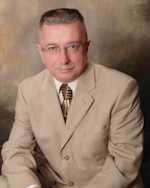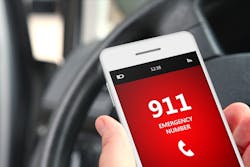Telephones remain the primary means of alerting first responders to emergencies. While today’s telephones may look and operate differently than their ancestors, and while new methodologies such as texting have been added, picking up the phone to report a fire or medical emergency still statistically outpaces personal reports, automatic alarms and other methods of notification. Given that, one might think that an enterprise with such a long and proven path would be free from worry when it came to getting help. Unfortunately, that isn’t the case. Although extremely reliable, there are technical and regulatory issues that in some circumstances pose life-threatening problems.
One situation where these symptoms arise involves multi-line telephone service (MLTS), often used to provide for the communications needs of a large number of users through a single device or switch. Some may be familiar with one type: the PBX, or Private Branch Exchange. Although the early versions of PBX used a human operator, tasks such as acquisition of an outside line are now commonly automated. Popular applications for this entire class of technology include high-rise buildings, apartment complexes, corporate campuses, hotels, healthcare facilities and schools and universities. From a fire service point of view, the common denominator is high single- or multi-building occupancy.
Access to 9-1-1
In December 2013, it was the functionality that obtains an outside line which was thrust into focus when a woman was stabbed to death inside a Texas hotel room. The woman’s 9-year-old daughter frantically attempted to call 9-1-1 four times. Each of the calls failed to connect. Why? Because of the simple fact that most of us have learned to live with – the situational need to dial an additional number in order to get a dial tone. The string “9-9-1-1” was actually needed to summon help – a condition that many argue prohibits 9-1-1 from truly being a three-digit universal number.
According to the American Hotel and Lodging Association, 47% of franchised hotels do not require an access code for 911. That number dropped to 32% for independently owned hotels. To quantify the exposure, in the U.S. alone there are 52,887 properties containing 4,926,543 guestrooms, based upon the most recent statistics.
In the aftermath of this tragedy, a member of the Federal Communications Commission (FCC) reached out to major hotel operators to gauge the magnitude of the issue. Since that time, Hank Hunt, the father of the victim, has campaigned for the enactment of “Kari’s Law,” named after the deceased woman and focused on making the ability to direct-dial 9-1-1 a requirement. It should also be noted that in addition to the “dial 9 first” issue, some occupancies list a different extension to be called in emergency. These calls are typically delivered to in-house security and the like, rather than being routed directly to local authorities.
On Jan. 23, 2015, FCC Commissioner Ajit Pai held a press conference at the Marshall, TX, Police Department to discuss progress on the matter. He was joined on the dais by Hunt and Congressman Louis Gohmert. Considerable progress in the hotel industry was reported during the past year, and many telephone vendors have now started to ship devices with direct-dial 9-1-1 capability as standard. This progress, however, did not necessarily carry over into other sectors. The FCC headquarters, it was mentioned, was among the places that still required the dialing of an additional digit to make emergency calls.
Faulty data
But access to the emergency number is not the only dilemma. MLTS telephone systems can also provide bad data to agencies receiving the emergency call. Enhanced 9-1-1 is designed to deliver Automatic Location Information (ALI) as a tool to ensure correct response. However, when a central private switch serves a large facility or an entire corporation, this information can be insufficient or flat-out wrong.
Consider the examples of the occupancies that often rely on this technology for their phone service. Is the street address alone sufficient to find a caller in a high-rise building? Is the location of the main switchboard accurate in determining a response for an entire college campus? And what about situations where offsite locations connect through the main office? Here the 9-1-1 call will be routed to the dispatch center serving corporate headquarters and not to the answering point in the community where the crisis actually exists. Considering that this can be in another town, another county, or even another state, it’s easy to see both the delay and the danger there.
Although it goes without saying that all callers should be interrogated for their exact address regardless of the presence of ALI, we are all too familiar with what happens when procedures are shortcutted or ignored on the fireground. Obviously, the same consequences apply to the dispatch process.
As early as 2000, the National Emergency Number Association (NENA) developed recommended standards for model MLTS 9-1-1 laws, and 18 states and a number of localities have already passed some form of legislation. However, acceptance – even though this is largely a technically correctable problem – is far from universal.
Shift from land lines to mobile devices
Closer to home, the National Fire Protection Association (NFPA) is also working on the issue. Stephen Verbil, chair of the NFPA 1221 – Standard for the Installation, Maintenance, and Use of Emergency Services Communications Systems committee, advised that the group addressed MLTS through a Tentative Interim Amendment (TIA) as part of their discussion process. While not specifically included in the upcoming 2016 edition, this mechanism allows the contents to bridge the gap between this and the next formally scheduled release in 2019.
Verbil, a former firefighter whose full-time job is that of emergency telecommunications manager for the Connecticut Department of Emergency Services and Public Protection, expanded on the need for such attention. “The old-fashioned methods of locating emergency callers are vaporizing right before our eyes,” Verbil said. “At least 70%, and sometimes more, of all 9-1-1 calls come from cellular devices. Many homes no longer have conventional telephones, and the number of landlines decreases every year. The corporate sector remains one of the ongoing users of traditional desk sets, and unless we address this issue we are in danger of losing a major remaining piece of wire line location records.”
Since the NFPA TIA relies upon NENA recommendations, it covers single structures in excess of 7,000 square feet or campus environments; in other words those conditions in which difficulty in obtaining accurate information can result in more serious delays. VoIP (Voice over Internet Provider) and other advances in technology will preserve – and sometimes add issues to – the utilization of MTLS systems by business, government, health care and education for years to come, so it is important for the fire service to both understand and address the shortcomings associated with their use. We cannot afford to let these services remain the biggest problem we have never heard of.
WEB LINKS
NFPA MTLS TIA: http://www.nfpa.org/Assets/files/AboutTheCodes/1221/ProposedTIANo1171_NFPA1221.pdf
NFPA TIA PROCESS: http://www.nfpa.org/codes-and-standards/standards-development-process/tias-errata-and-fis/tias
NENA MODEL MLTS LEGISLATION: http://www.nena.org/general/custom.asp?page=MLTS_Legislation
MLTS STATE LEGISLATION MAP: http://www1.911enable.com/resource-center/state-e911-legislation

Barry Furey
BARRY FUREY, who is a Firehouse Contributing Editor, provides consulting and training services in emergency communications. He is the former director of the Raleigh-Wake Emergency Communications Center in North Carolina. During his 50-year public safety career, he has managed 9-1-1 centers and served as a volunteer fire officer in three other states. In 2005, Furey received a life membership in the Association of Public-Safety Communications Officials (APCO) International for his continued work in emergency communications. Furey was inducted into the Firehouse Hall of Fame in 2017.






